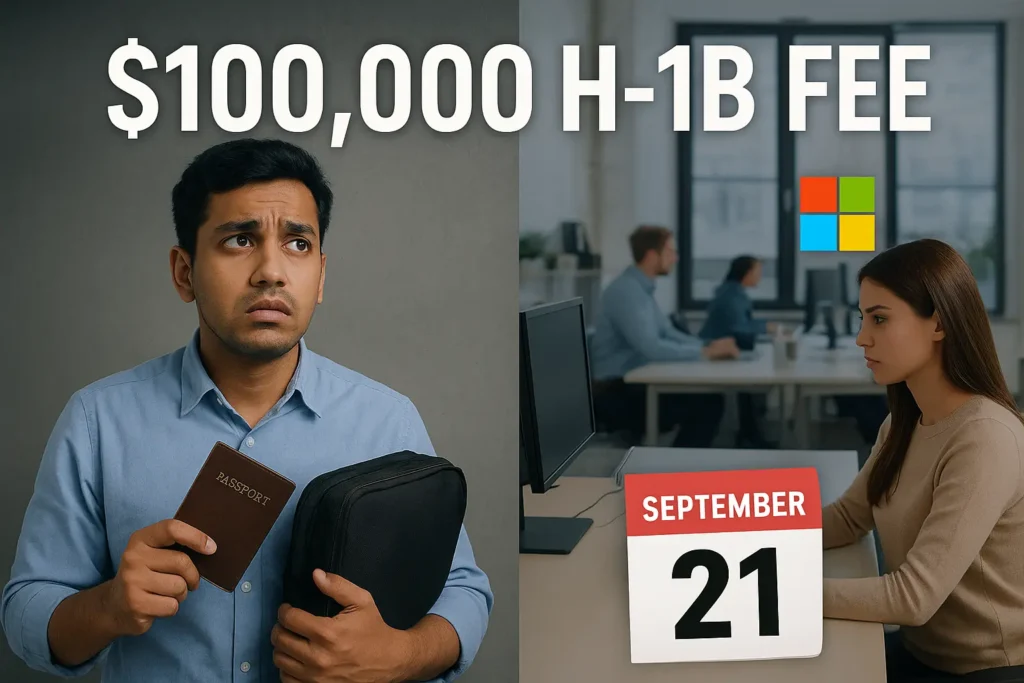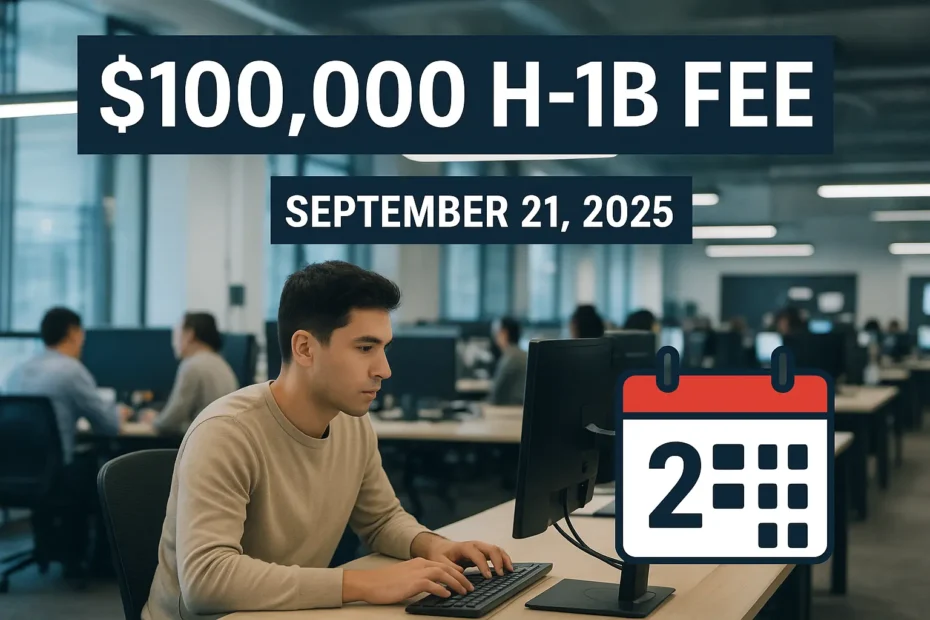Introduction
The H-1B visa has long been one of the most popular and controversial work visas in the United States. Tech companies rely on it, Indian workers benefit from it, and US politics debate it endlessly. Now, former President Donald Trump has announced a dramatic new change: starting September 21, 2025, employers filing new H-1B petitions must pay a $100,000 fee.
This sudden move has sparked anxiety, confusion, and heated discussions across the US, India, and the global tech industry. Let’s break down what exactly has changed, who is affected, and what it could mean for workers and companies going forward.
What Has Changed
- The New $100,000 Fee
Any new H-1B petition filed after 12:01 a.m. EDT, September 21, 2025 must include a $100,000 payment. Without this, the petition will not be accepted. - Not for Current Holders or Renewals
Workers already in the US on H-1B visas, or those applying for extensions, do not have to pay this fee. This only applies to new petitions. - Duration of Rule
The proclamation will last 12 months unless extended. - Possible Exceptions
Certain “national interest” petitions may be exempted, but details are unclear and will depend on decisions by DHS and USCIS.

Why the Fee Was Introduced
According to the Trump administration, the policy aims to:
- Protect American jobs by making it harder for companies to undercut US wages with cheaper foreign labor.
- Curb abuse of the H-1B system, which critics say some outsourcing firms have exploited.
- Generate revenue for the US Treasury at a time of growing national debt.
Who Is Most Affected
- Foreign workers from India: India supplies nearly 70% of H-1B visa holders. For many, this fee is higher than their annual salary, raising fears that opportunities may shrink drastically.
- Families of H-1B holders: Many worry about separation or travel restrictions. Workers abroad rushed to return before the rule went live.
- US companies, especially in tech: Microsoft, Amazon, and Google have already advised employees to avoid unnecessary travel and brace for potential disruptions.
Global and Political Reactions
- India’s government has described the fee as “concerning” and warned of humanitarian consequences.
- US employers argue it could cause a tech talent shortage, making it harder to fill critical roles.
- Immigration lawyers expect lawsuits, saying only Congress has authority to impose such steep visa fees.
Consequences and Concerns
- Reduced Petitions
Many small and mid-sized companies may stop filing new H-1Bs due to cost. - Impact on Innovation
Sectors like artificial intelligence, biotech, and engineering rely on international talent. Fewer H-1Bs could slow innovation. - Legal Challenges
Expect multiple lawsuits claiming the executive branch cannot impose this fee unilaterally. - Uncertainty for Workers Abroad
Confusion remains about travel, H-4 dependents, and whether exceptions will apply.
What Workers and Employers Should Do
- Workers abroad: Return to the US before September 21, 2025, if possible, to avoid the new fee.
- Employers: Reevaluate hiring and staffing plans. Companies relying heavily on H-1Bs should plan for delays and costs.
- Stay Updated: Follow USCIS announcements and immigration attorney guidance for clarifications.
| Key Facts Recap Aspect | New Rule / Status |
|---|---|
| Fee amount | $100,000 per new H-1B petition filed after Sept 21, 2025 at 12:01 a.m. EDT (USCIS) |
| Applies to | New petitions only; not to existing visa holders or renewals (USCIS) |
| Duration | 12 months (subject to extension) (The White House) |
| Exception | Discretion for waivers (national interest), etc. (The White House) |
Final Thoughts
The $100,000 H-1B fee marks one of the most dramatic shifts in US skilled-worker immigration in decades. While it may achieve the goal of reducing abuse, it risks cutting off talent pipelines, disrupting families, and weakening US competitiveness in the global tech economy.
The policy has created confusion, fear, and frustration—but also determination among affected workers and employers to push back legally and politically. The next few months will show whether this rule survives challenges, or becomes another chapter in the ongoing H-1B visa debate.

The next time I read a blog, I hope that it doesnt disappoint me as much as this one. I mean, I know it was my choice to read, but I actually thought youd have something interesting to say. All I hear is a bunch of whining about something that you could fix if you werent too busy looking for attention.